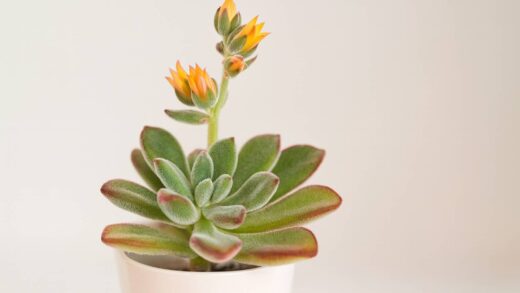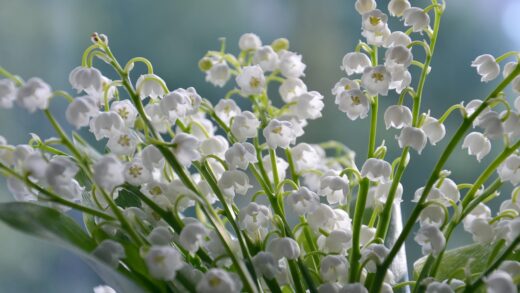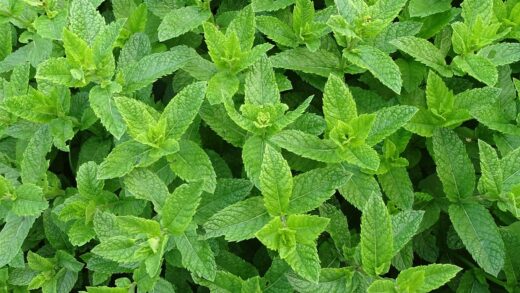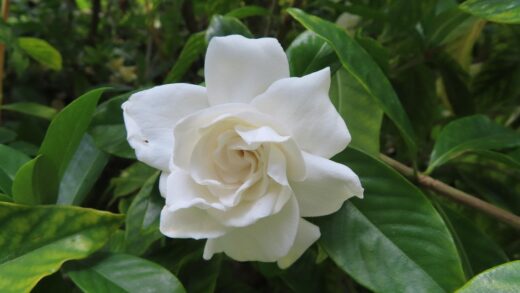The process of planting and propagating the trifoliate orange is a straightforward endeavor, accessible even to gardeners with limited experience in citrus cultivation. This species’ inherent toughness and adaptability make it forgiving of minor errors, ensuring a high rate of success when fundamental principles are followed. Establishing a new trifoliate orange in the garden begins with the critical step of selecting a suitable location, one that provides ample sunlight and, most importantly, soil with excellent drainage to prevent root system diseases. Successful planting hinges on proper hole preparation, careful handling of the root ball, and attentive aftercare, especially during the crucial first growing season, to ensure the plant establishes a robust foundation for future growth and resilience.
Propagation of this unique citrus relative offers several avenues for increasing stock, each with its own set of advantages. The most common and reliable method is through seed propagation, as the seeds of Poncirus trifoliata exhibit high viability and germinate readily without complex treatments. This method is often used for producing hardy rootstock onto which other, more tender citrus varieties are grafted. Alternatively, vegetative propagation through cuttings provides a way to create a genetic clone of the parent plant, a useful technique if a particular specimen has desirable characteristics. Understanding the specific requirements and timing for each method is key to successfully creating new plants.
When planting a nursery-grown trifoliate orange, the timing of the operation is an important consideration. The ideal time to plant is in the spring, after the last frost has passed. This allows the plant the entire growing season to establish its root system before facing the stresses of its first winter. Autumn planting is also a viable option in milder climates, provided it is done early enough to allow for several weeks of root growth before the ground freezes. Regardless of the season, proper planting technique is paramount to minimize transplant shock and encourage rapid establishment.
The long-term health and structure of the trifoliate orange are significantly influenced by these initial planting and propagation stages. A well-planted specimen in a carefully chosen site will grow with more vigor and be better equipped to withstand environmental stresses such as drought and cold. Similarly, plants propagated with care will start their life with a strong, healthy root system, predisposing them to a successful life in the garden. These foundational steps are an investment in the future of the plant, ensuring it develops into the striking and resilient ornamental that it is known to be.
Selecting the ideal planting site
The success of a trifoliate orange is fundamentally linked to its location within the landscape. The most critical requirement for this species is exposure to full sun. A position that receives a minimum of six to eight hours of direct sunlight each day is essential for promoting dense foliage, strong structural growth, and, most importantly, prolific flowering and fruit set. Locations with a southern or western exposure are generally preferred as they offer the most intense and prolonged light. Insufficient sunlight will result in a plant that is sparse, leggy, and produces few, if any, flowers, failing to deliver the ornamental qualities for which it is grown.
More articles on this topic
Beyond sunlight, the nature of the soil plays a pivotal role. Poncirus trifoliata demands well-drained soil and will not tolerate “wet feet” or areas where water collects and stands after rainfall. Chronic waterlogged conditions will inevitably lead to root rot, a fungal disease that is often fatal to the plant. Therefore, it is imperative to avoid low-lying areas or sites with heavy, compacted clay soil that impedes drainage. If the only available location has heavy soil, significant amendment with organic matter and potentially the creation of a raised bed or mound for planting will be necessary to ensure the root zone remains healthy.
Consideration should also be given to the plant’s mature size and its defensive thorns. A trifoliate orange can grow into a large, dense shrub, reaching heights and spreads of 3 to 5 meters if left unpruned. It should be planted in a location where it has ample space to grow without encroaching on walkways, driveways, or other plants. Siting it away from high-traffic areas is also a wise precaution, as its sharp, sturdy thorns can pose a significant hazard to people and pets. This thorny nature, however, can be used to strategic advantage, making it an excellent choice for creating an impenetrable security barrier or hedge along a property line.
Finally, while the trifoliate orange is exceptionally cold-hardy, providing some protection from harsh winter elements can be beneficial, especially for young plants. A location that is shielded from the full force of strong, drying winter winds can help prevent the desiccation of stems and buds. Planting it on the leeward side of a building, a fence, or a stand of evergreen trees can create a microclimate that mitigates the worst of winter’s challenges. This small consideration during the site selection process can contribute significantly to the plant’s overall health and its ability to thrive year after year.
The process of planting
The optimal time to plant a container-grown or bare-root trifoliate orange is during the dormant season, either in early spring after the threat of severe frost has passed or in early autumn. Spring planting is often favored in colder climates as it gives the plant the entire growing season to establish a strong root system before winter. The first step in the planting process is to prepare the planting hole. The hole should be dug at least twice as wide as the plant’s root ball and just as deep. It is crucial that the hole is not dug deeper than the root ball, as this can cause the plant to settle over time, sinking too deep into the ground which can lead to bark decay.
More articles on this topic
Before placing the plant in the hole, it is important to inspect the root system. If the plant is container-grown, the roots may be circling the inside of the pot. These circling roots should be gently teased apart or, if necessary, cut in a few places with a sharp knife to encourage them to grow outwards into the surrounding soil rather than continuing to circle and potentially girdle the plant. For bare-root plants, any damaged or broken roots should be cleanly pruned off. The plant should then be positioned in the center of the hole, ensuring that the top of the root ball is level with or slightly above the surrounding soil grade.
Once the plant is correctly positioned, the process of backfilling the hole begins. The soil that was originally excavated should be used to fill the hole, amended with compost or other organic matter if the native soil is poor. Fill the hole about halfway, and then water it thoroughly to help settle the soil and eliminate any large air pockets around the roots. After the water has drained away, continue filling the hole with the remaining soil, gently firming it down with your hands. Avoid heavily tamping the soil, as this can cause compaction and hinder root growth.
After the hole is completely backfilled, create a shallow basin or “berm” of soil around the perimeter of the planting area. This basin will act as a reservoir, helping to direct water to the root ball and ensuring deep, efficient watering during the critical establishment period. The newly planted trifoliate orange should be watered deeply and thoroughly immediately after planting. Finally, applying a 5-7 centimeter layer of organic mulch over the root zone, keeping it away from the main stem, will help conserve moisture, regulate soil temperature, and suppress competing weeds, giving the new plant the best possible start in its new location.
Propagation from seed
Propagating trifoliate orange from seed is the most common and straightforward method for creating new plants. The seeds have a high germination rate, and the process does not require specialized equipment. The first step is to harvest the fruit in the autumn when it has fully ripened to a bright yellow-orange color and has become highly fragrant. The seeds should be extracted from the pulpy interior of the fruit and cleaned thoroughly to remove any clinging flesh, as the pulp contains germination-inhibiting compounds. It is important to wash the seeds in clean water and allow them to air dry briefly before proceeding.
Trifoliate orange seeds require a period of cold, moist stratification to break their natural dormancy and trigger germination. This process mimics the natural winter conditions the seeds would experience outdoors. To stratify the seeds, they can be mixed with a lightly dampened medium like peat moss, vermiculite, or sand. This mixture should then be placed in a sealed plastic bag or container and stored in a refrigerator (not the freezer) for a period of 60 to 90 days. It is essential to check the medium periodically to ensure it remains moist but not waterlogged.
After the cold stratification period, the seeds are ready for sowing. They can be planted in deep pots or seed trays filled with a well-draining seed-starting mix. Plant the seeds about 1-2 centimeters deep and water the medium gently but thoroughly. Place the pots or trays in a warm, bright location, but out of direct, intense sunlight which could dry out the soil too quickly. Maintaining consistent moisture is key to successful germination; the soil should be kept damp but never soggy. Germination can be expected to occur within a few weeks to a couple of months.
Once the seedlings have germinated and developed a few sets of true leaves, they are strong enough to be transplanted into individual pots. Handle the seedlings carefully to avoid damaging their delicate root systems. Continue to grow them in a protected environment, such as a cold frame or greenhouse, for their first year. This allows them to develop a robust root system before being planted out in their final garden position the following spring. Growing from seed is a patient process, but it is a highly rewarding way to produce a large number of hardy plants, especially for creating hedges or for rootstock purposes.
Propagation from cuttings
Vegetative propagation through cuttings is another effective method for reproducing trifoliate orange, with the primary advantage being that the new plant will be a genetic clone of the parent. This is particularly useful for preserving the specific traits of a superior specimen. The best time to take cuttings is in late spring or early summer when the plant is in a state of active growth. Select healthy, vigorous semi-hardwood stems from the current season’s growth. These are stems that are beginning to firm up but are not yet fully mature and woody. The ideal cutting should be about 15-20 centimeters long and have several leaf nodes.
Preparing the cuttings correctly is crucial for successful rooting. Using a sharp, sterile knife or pruners, make a clean cut just below a leaf node. Remove the leaves from the lower half of the cutting to reduce water loss through transpiration and to expose the nodes where roots will form. It is also beneficial to lightly wound the bottom 2-3 centimeters of the cutting by scraping off a thin sliver of bark on two sides. This wounding encourages callus formation and subsequent root development.
To increase the chances of rooting, the prepared base of the cutting should be dipped into a rooting hormone powder or gel. Gently tap off any excess hormone before planting. The cuttings should then be inserted into a pot or tray filled with a sterile, well-draining rooting medium, such as a mix of perlite and peat moss or coarse sand. Insert the cuttings about one-third to one-half of their length into the medium, ensuring that at least two nodes are buried. Gently firm the medium around the base of each cutting.
Creating a humid environment is essential for preventing the cuttings from drying out before they can develop roots. Cover the pot or tray with a clear plastic bag or a propagator lid to maintain high humidity. Place the cuttings in a warm location with bright, indirect light. It is important to check the cuttings regularly, airing them out every few days to prevent fungal growth and ensuring the medium remains consistently moist but not waterlogged. Rooting can take several weeks to a few months. Once a strong root system has developed, which can be checked by a gentle tug on the cutting, the new plants can be potted up individually and gradually acclimated to lower humidity conditions.


















